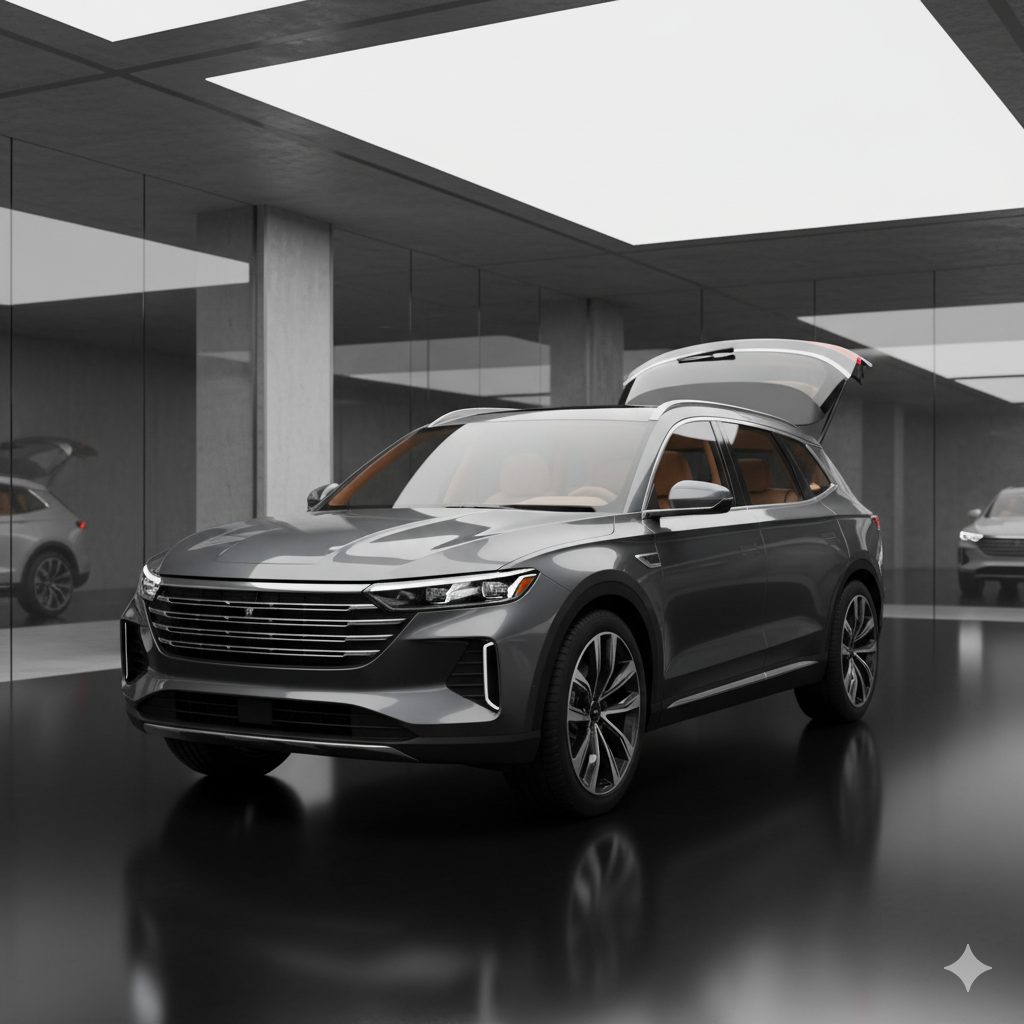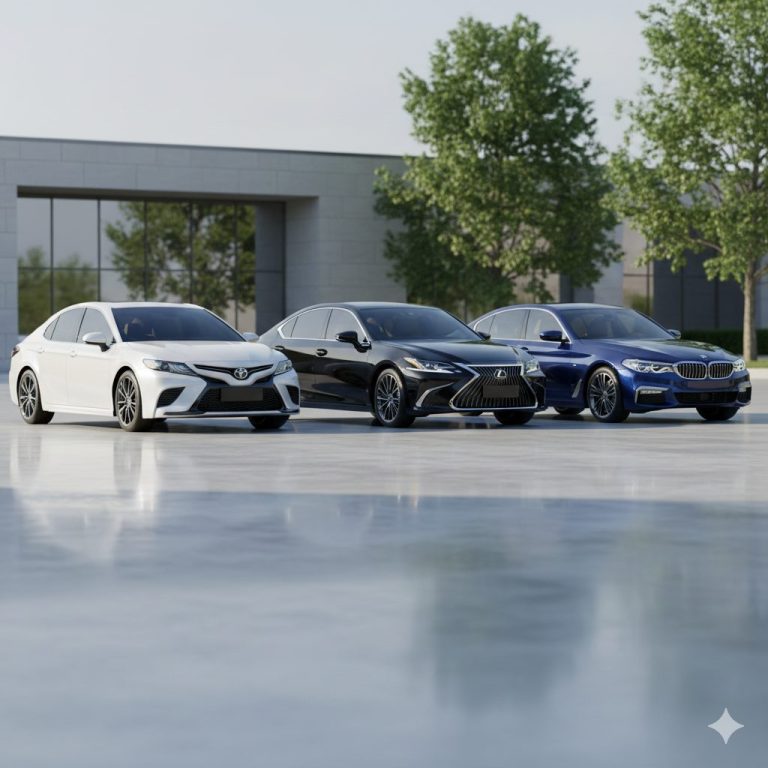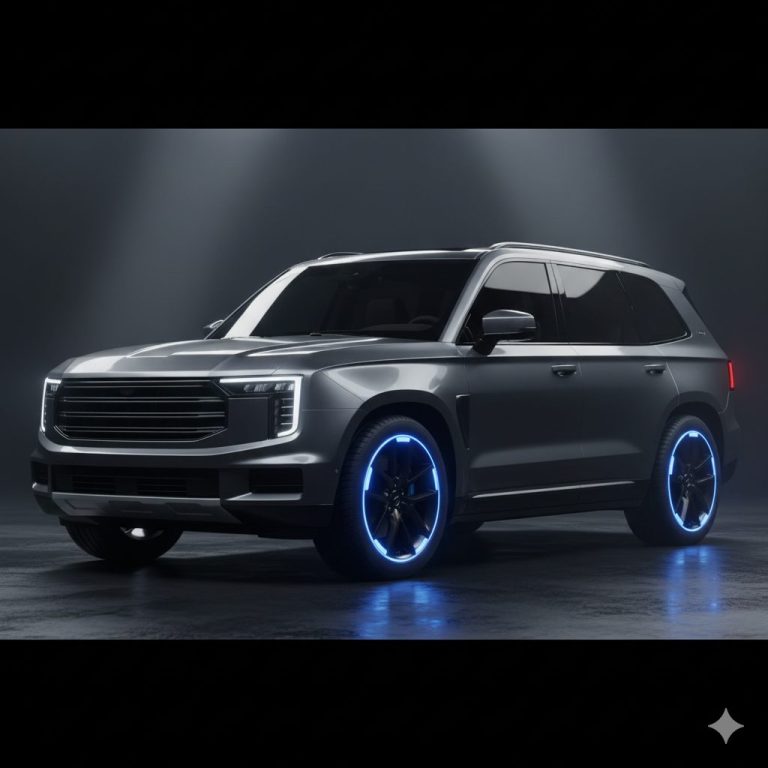2025’s Top 10 Mid-Size SUVs with the Biggest Cargo Capacity
Need room for everything? These 10 mid-size SUVs offer the most cargo space in 2025, blending everyday practicality with comfort and style. Whether it’s luggage, sports gear, or family road-trip essentials these SUVs make hauling it all feel effortless.
2025 Jeep Wagoneer L
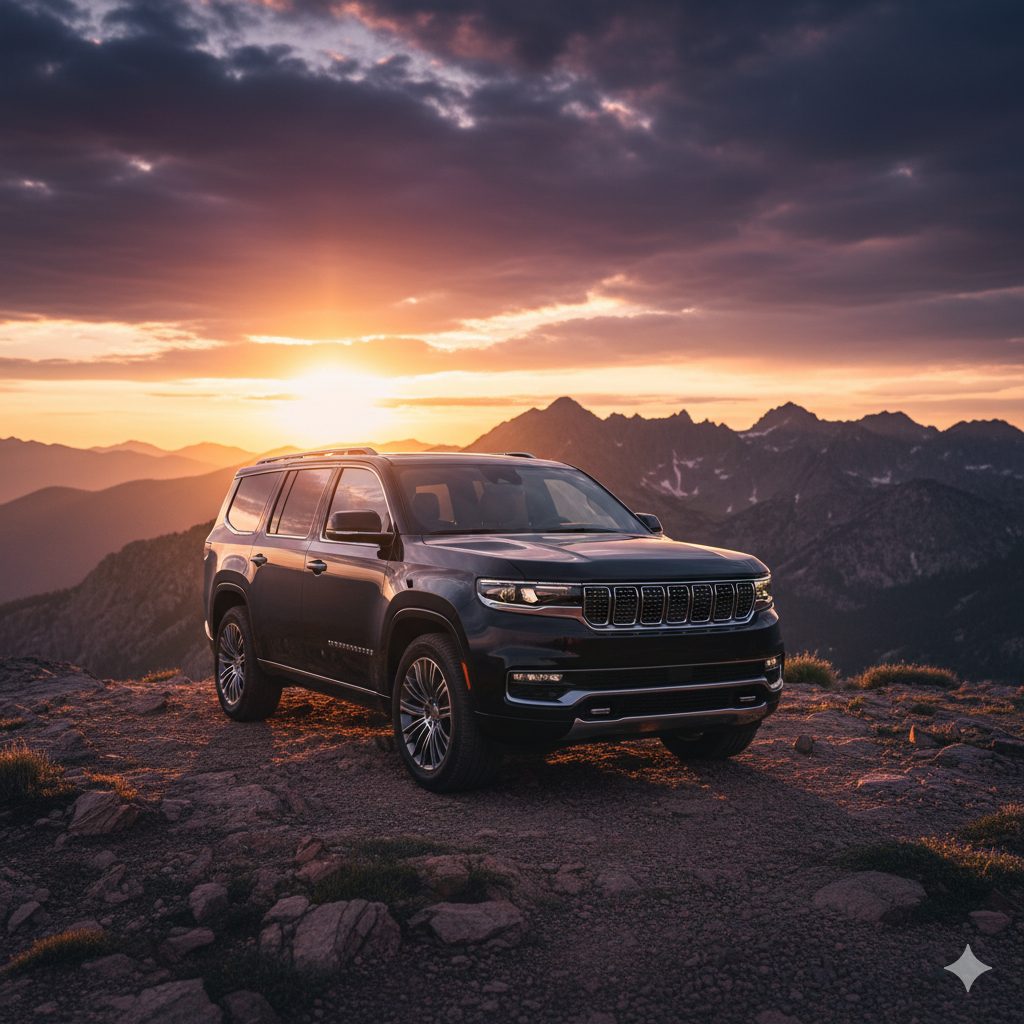
the Wagoneer L is a straight-up cargo king, right? You get a massive 130.9 cubic feet of cargo space when you fold all the rear seats down—honestly, that’s so much room you could live out of it for a whole weekend glamping trip, no sweat. It’s not just big; it’s got that classic tough Jeep look on the outside, all rugged and ready for off-road adventures, but inside? Oh man, it’s a plush little palace. We’re talking leather seats everywhere, fancy tech screens for days, tri-zone climate control so nobody’s fighting over the AC, and it easily fits eight people with room to spare. Feels super luxe without being all stiff or pretentious.
2025 Chevrolet Traverse

The Traverse slides in next, and uh, it’s got about 98 cubic feet max cargo, which is still ridiculous for a mid-sizer perfect for family hauls without feeling like you’re driving a truck. It’s got three rows that fold flat super smooth, roomy seats, and this new redesign makes it look sharper, less like an old minivan wannabe. Features-wise, it’s got Apple CarPlay, wireless charging, and it’s comfy on long drives, honestly. Why good? It’s reliable Chevy stuff, punches above its weight in space, and doesn’t guzzle gas too bad with the optional turbo. Observation: the interior materials are decent but not wow-level fancy practical, you know? Vs. something like a Highlander, it’s got more elbow room for kids fighting in the back. Personally, I’d pick it for everyday chaos ’cause it just works, starting around $37,000 feels like a steal for that much cargo freedom.
2025 Kia Telluride
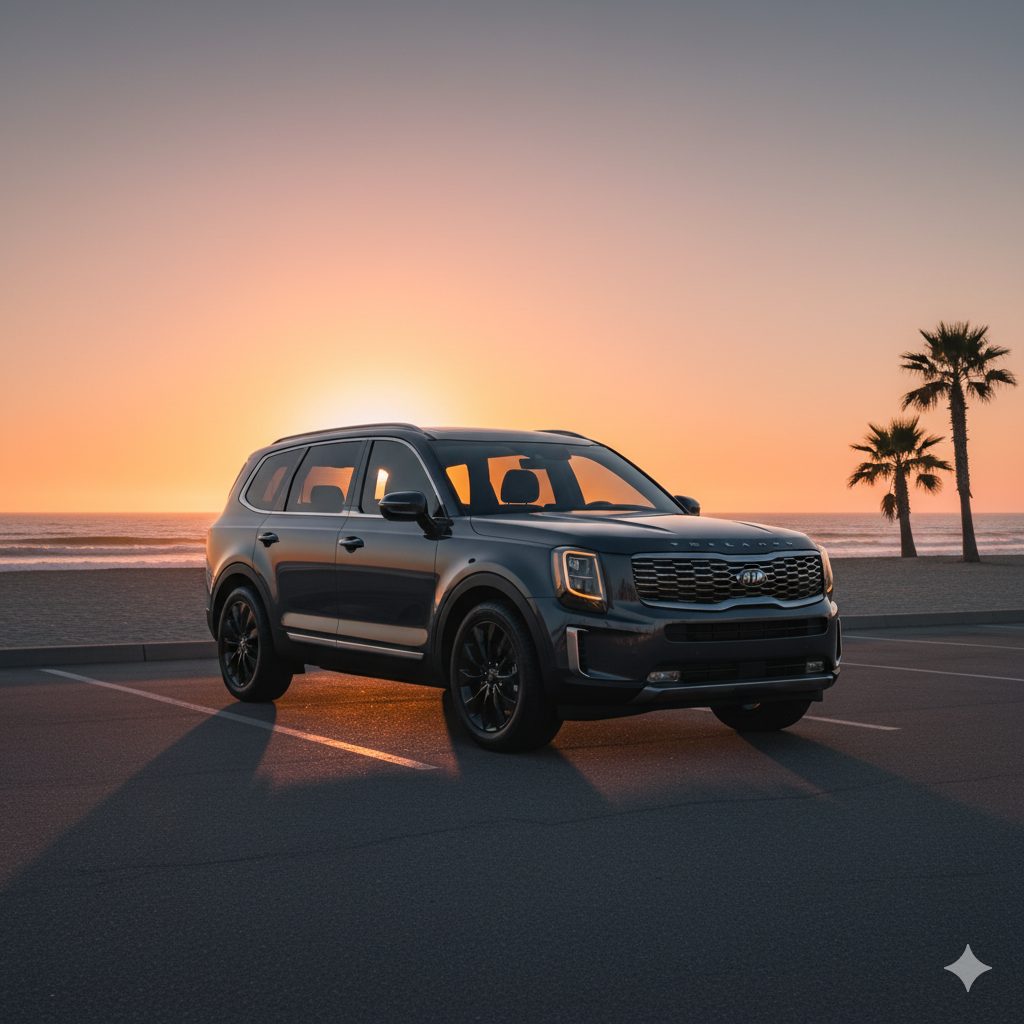
Ah, the Telluride can’t skip this one, it’s like the cool kid everyone wants. Packs 87 cubic feet of cargo behind the first row, which means your IKEA runs or beach gear fit no problem, and the third row’s usable too. It’s got this sleek, almost premium vibe with quilted seats, a massive touchscreen, and that V6 under the hood for decent pep. So yeah, it’s good ’cause it balances space, style, and not killing your wallet feels upscale without the snobbery. Side thought: why does it always win awards? Probably ’cause it looks like it costs more than it does. Compared to the Palisade, it’s sportier, less formal I mean, if you’re hauling cargo but wanna feel fancy, this edges it. Opinion? Love it, honestly; at about $36,000 to start, it’s my go-to rec for families who actually use the space.
2025 Hyundai Palisade

Palisade’s right behind, with 86.4 cubic feet cargo max super close to the Telluride, like they share DNA but this one’s more… elegant? Yeah, that’s it. Inside, it’s got digital dashes, leather that feels nice, and enough room for seven or eight without cramping. Features include blind-spot cams and quiet highway rides honestly, it’s comfy as heck. Why it’s solid? Great for long trips where you load up coolers and tents; the space is thoughtful, not just big. Random observation: the LEDs make it look futuristic at night, kinda fun. Vs. the Kia, it’s a tad more luxe but drives similar maybe pick this if you want quieter vibes. My personal bit? Not gonna lie, I changed my mind on Hyundai; this one’s a winner at around $37,000, especially if cargo’s your jam without the flash.
2025 Ford Explorer
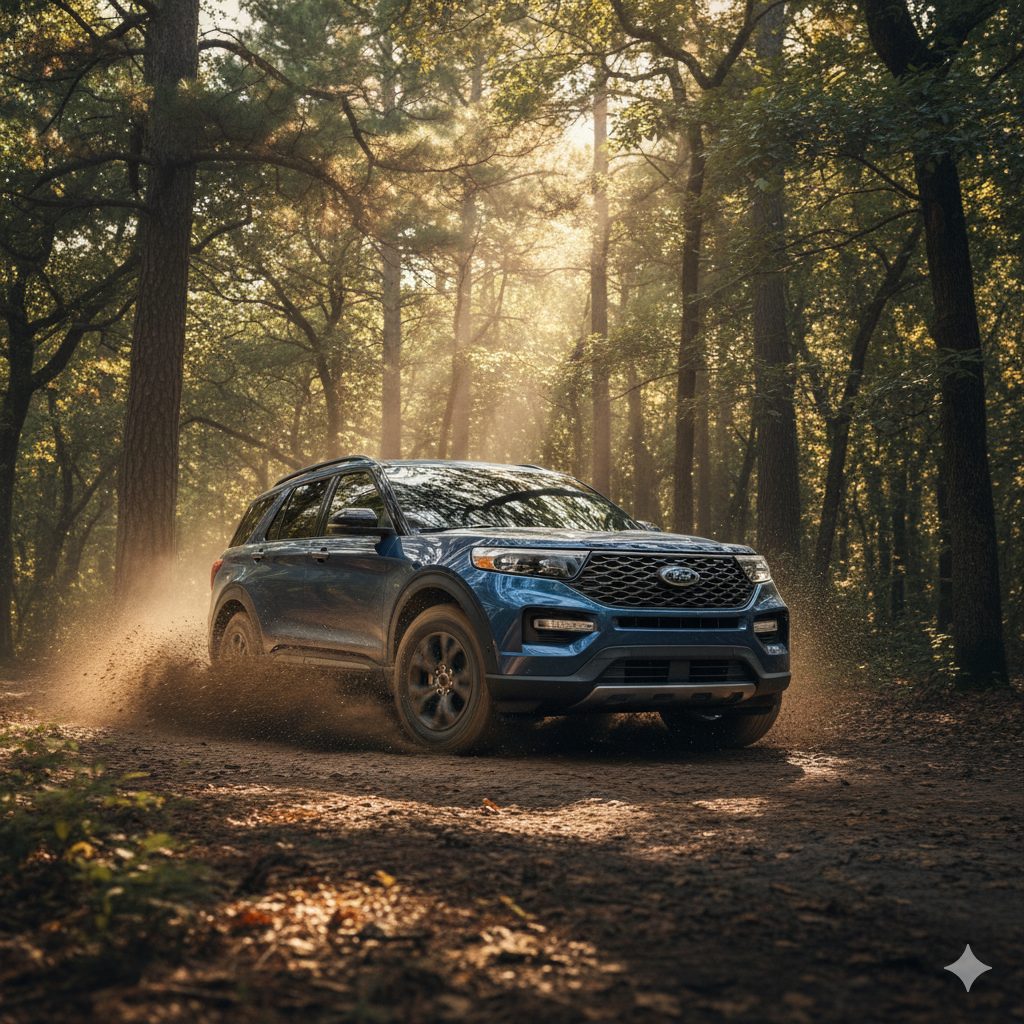
The Explorer’s got 87 cubic feet cargo, tying the Telluride basically surprising how roomy it is for that classic American SUV feel. It’s got optional hybrid power for better mileage, three rows that power-fold, and tech like a big screen with Ford’s sync system. Good for? Hauling stuff adventurously it’s got towing chops too, up to 5,000 pounds. You know, it’s not the smoothest ride, but it’s capable, like your buddy who always helps move furniture. Joke: it explores your wallet less than full-sizers. Compared to the Traverse, it’s more fun to drive, less family-bland. Opinion: Solid pick if you want versatility; starts at $38,000, and yeah, I’d take the hybrid for those cargo-filled commutes.
2025 Volkswagen Atlas

Atlas jumps in with 96 cubic feet max wait, is that right? Yeah, it’s sneaky spacious, like a German engineer said, “Make it a trunk on steroids.” Seats up to seven, folds flat easy, and the interior’s got that clean VW look with Apple integration and adaptive cruise. Why good? It’s stable on highways, AWD option for weather, and the space feels premium, not cheap. Observation: it’s long, so turning radii suck in cities uh, watch out for that. Vs. the Subaru, it’s more refined, less rugged. Personally, I like how it hauls without drama; at about $40,000, it’s worth it if you need that extra cubic footage for bulky stuff.
2025 Subaru Ascent

Subaru’s Ascent is all about that outdoorsy life, with 86 cubic feet cargo enough for kayaks or ski gear, and standard AWD means no slipping in rain. It’s got safety tech everywhere, like eye-sight collision avoidance, and a flat load floor for easy stacking. So yeah, good for active families who actually use the space for adventures, not just groceries. Tiny joke: it’s like a Forester on growth hormones. Compared to the Forester, way more seats but same reliable vibe. My take? Honestly, if you live somewhere snowy, this is it around $38,000, and the cargo payoff’s huge for the price.
2025 Honda Pilot
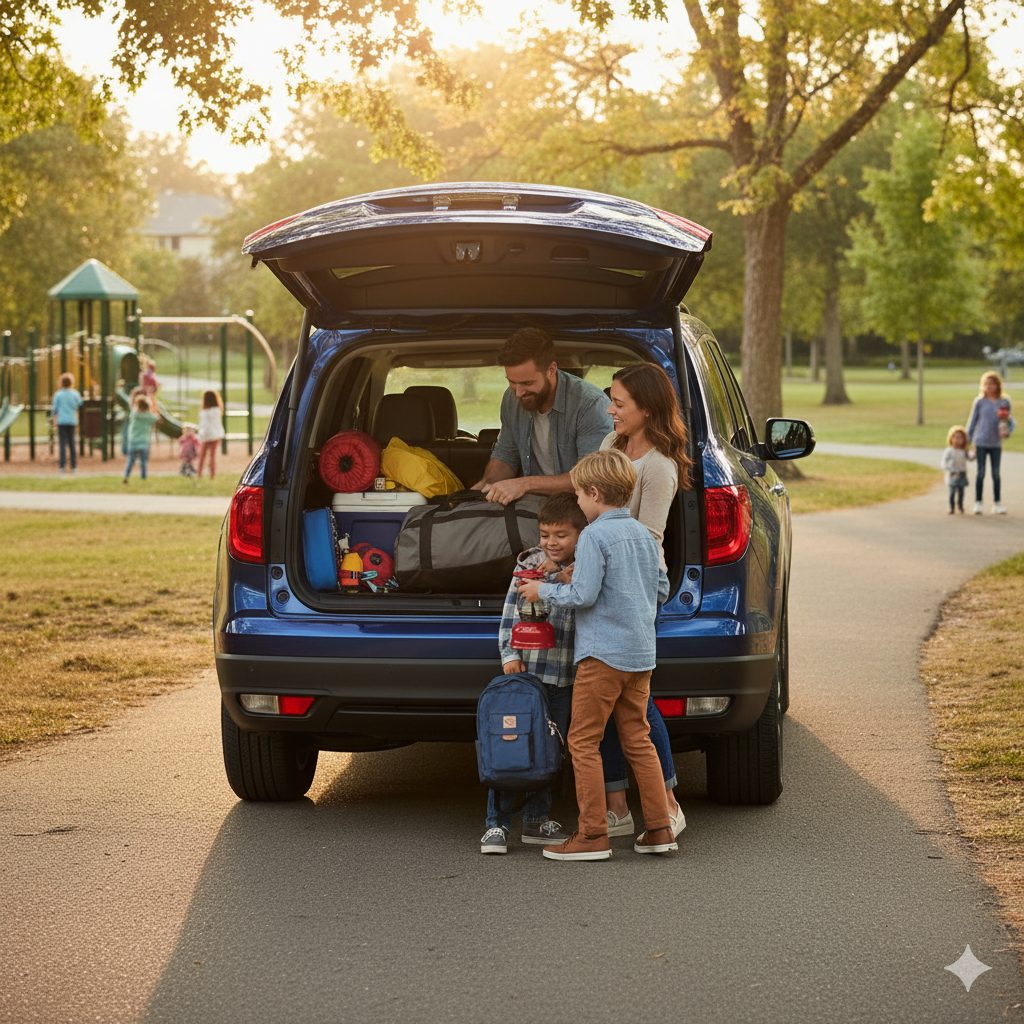
Pilot’s classic, with 83.9 cubic feet cargo max reliable space that doesn’t wow but delivers every time. Redesigned for 2025, it’s got a bigger screen, trailwatch cams for off-roading light, and seats that slide for flexibility. Why it’s good? Honda durability means it lasts, and the ride’s smooth for loaded-up drives. Random thought: it’s like the trustworthy friend who never flakes on helping with moves. Vs. the Highlander, it’s roomier in the third row I mean, kids fit better. Opinion: Not exciting, but at $38,000, I’d grab it for peace of mind and all that cargo room.
2025 Toyota Highlander
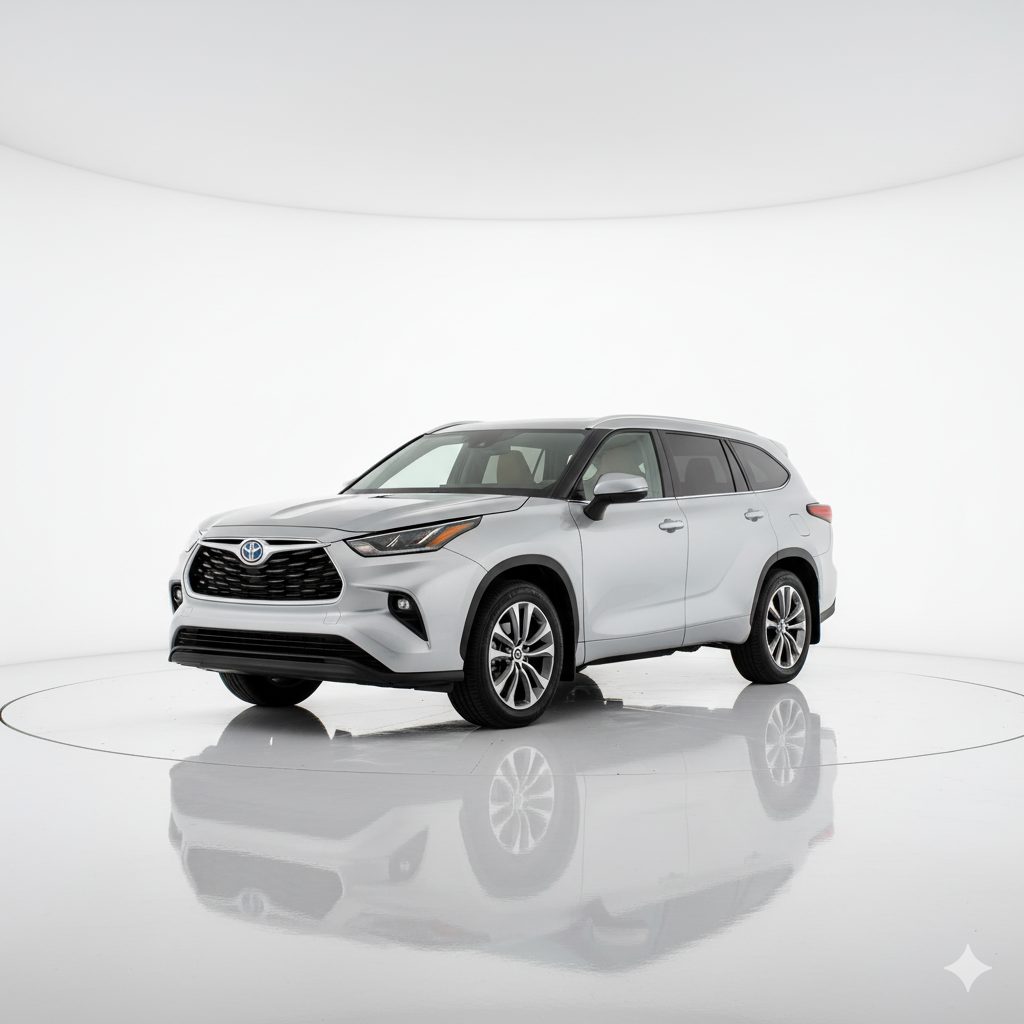
Highlander’s in with 84 cubic feet cargo Toyota’s take on practical space, especially the hybrid version sips gas while hauling. Three rows, hybrid efficiency up to 36 mpg, and Toyota safety sense everywhere. Good for? Daily life where you need space without fuss; folds flat nicely. Side thought: interiors are getting fancier, less plasticky now. Compared to the Pilot, it’s quieter but pricier wait, is it worth it? Yeah, for the reliability. Personally, love the hybrid angle; starts around $40,000, perfect if cargo meets efficiency.
2025 Nissan Pathfinder
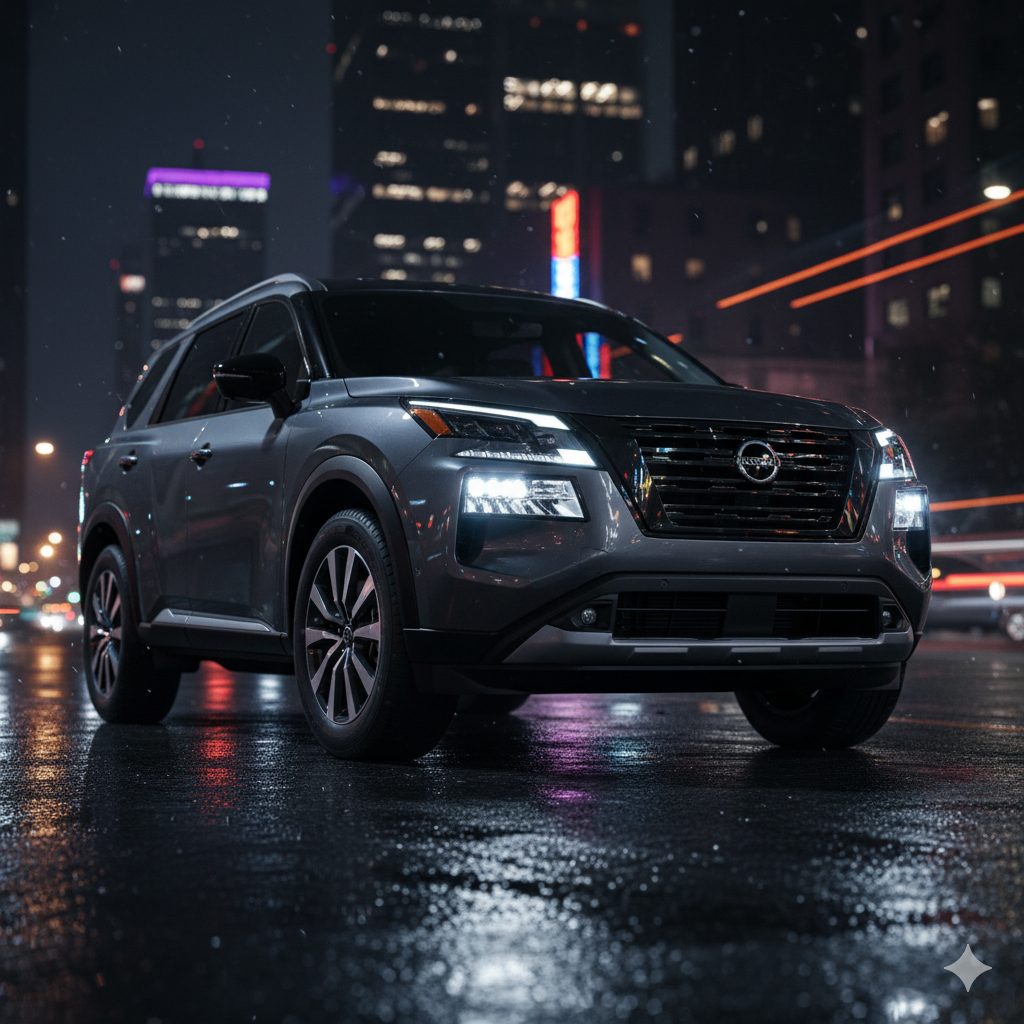
Pathfinder sneaks 80-ish cubic feet cargo, modernized with a tough look and rock mode for trails. It’s got zero-gravity seats that are comfy, a 9-inch screen, and V6 power for towing. Why good? Balances space and fun drives better than older Nissans. Observation: it’s underrated, like that band you discover late. Vs. the Explorer, less tech but cheaper feel. My bit? Solid for under $35,000; haul your stuff without regrets.
2025 Kia Sorento

Last up, Sorento with 75.5 cubic feet smaller but still packs punch for mid-size, hybrid option included. Turbo engine’s zippy, interior’s sleek with dual screens, and it seats seven tight but functional. Good for urban hauls where max space isn’t everything. Joke: it’s the compact big brother. Compared to Telluride, less room but nimbler. Opinion: At $37,000, it’s a budget win if you don’t need cavernous honestly, versatile enough.

